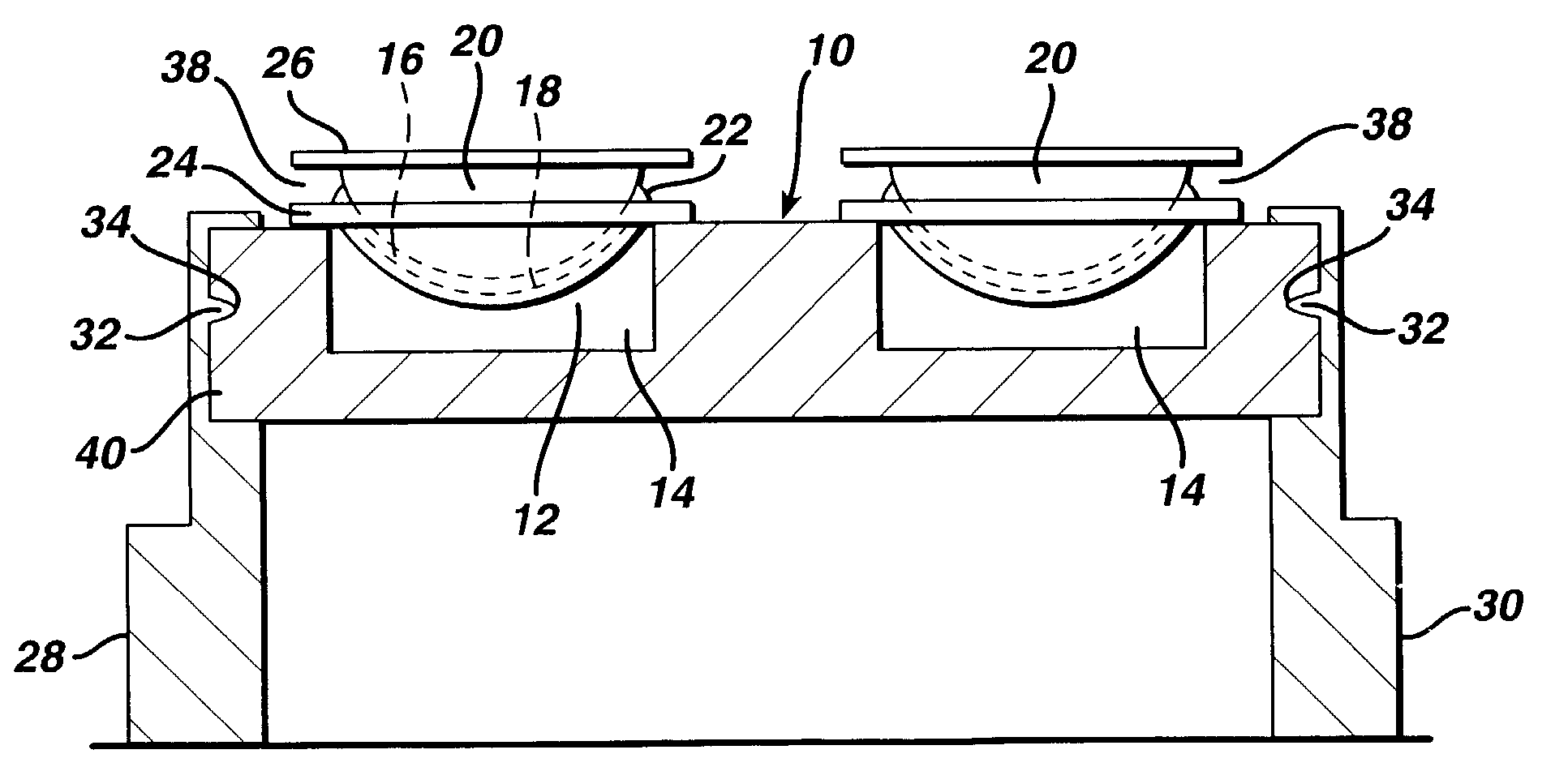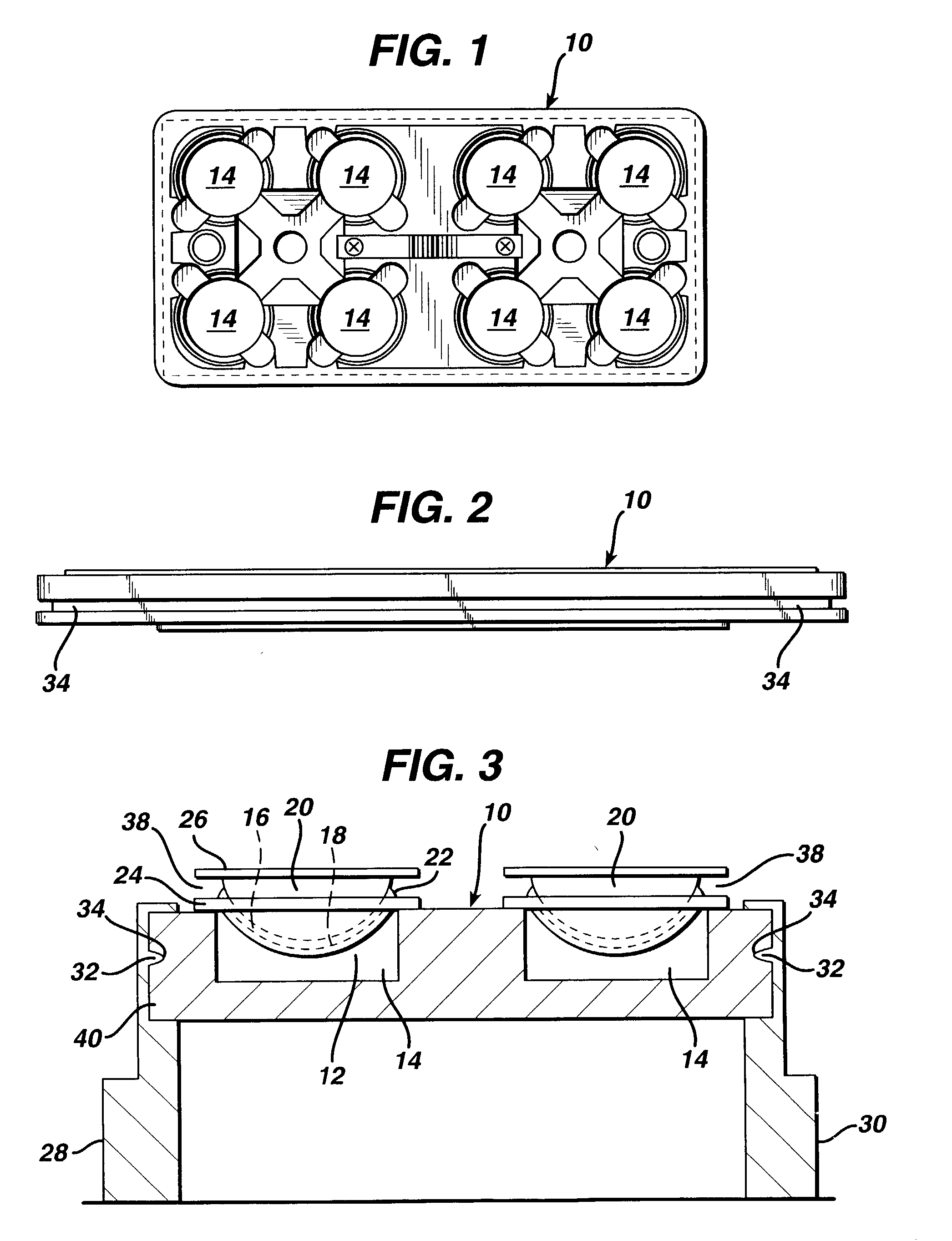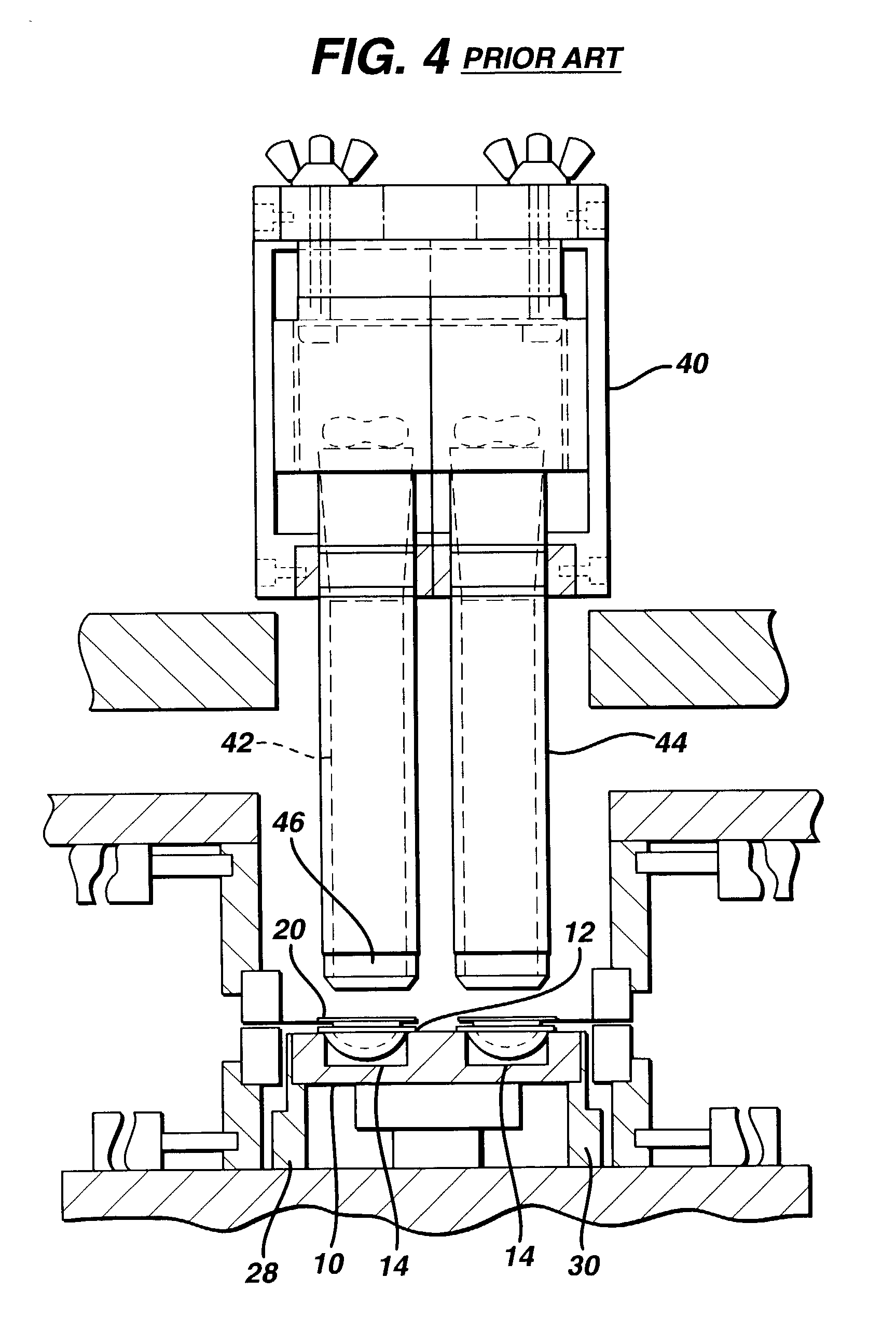Ir-emitter heating device and method for demolding lenses
a technology of demolding device and iremitter, which is applied in the direction of dough shaping, manufacturing tools, instruments, etc., can solve the problems of fracturing a mold portion, reducing the yield rate of the process, and increasing the possibility of lens damage,
- Summary
- Abstract
- Description
- Claims
- Application Information
AI Technical Summary
Benefits of technology
Problems solved by technology
Method used
Image
Examples
Embodiment Construction
[0047] The ophthalmic lens to be demolded in the practice of the present invention is preferably formed in a volume defined between front and back contact lens mold portions, each of which are formed by the processes set forth in U.S. Pat. No. 5,540,410, assigned to the assignee of the present invention, and the disclosure of which is incorporated by reference herein.
[0048] More particularly, the front and back curve mold portions are preferably transported through the manufacturing line on pallets 10, one of which is shown in FIGS. 1 and 2. Referring also to FIG. 3, it is understood that the front curve portion 12 of the mold is carried within one of the plurality of recesses 14 defined by the pallet 10. In the presently illustrated embodiment of the pallet 10, the pallet 10 has the capacity to carry up to eight front curve molds in its recesses 14. During the process by which the lens is formed, the concave portion 16 of the front curve mold 12 is partially filled with a reactive ...
PUM
| Property | Measurement | Unit |
|---|---|---|
| temperature | aaaaa | aaaaa |
| surface roughness | aaaaa | aaaaa |
| surface roughness | aaaaa | aaaaa |
Abstract
Description
Claims
Application Information
 Login to View More
Login to View More - R&D
- Intellectual Property
- Life Sciences
- Materials
- Tech Scout
- Unparalleled Data Quality
- Higher Quality Content
- 60% Fewer Hallucinations
Browse by: Latest US Patents, China's latest patents, Technical Efficacy Thesaurus, Application Domain, Technology Topic, Popular Technical Reports.
© 2025 PatSnap. All rights reserved.Legal|Privacy policy|Modern Slavery Act Transparency Statement|Sitemap|About US| Contact US: help@patsnap.com



